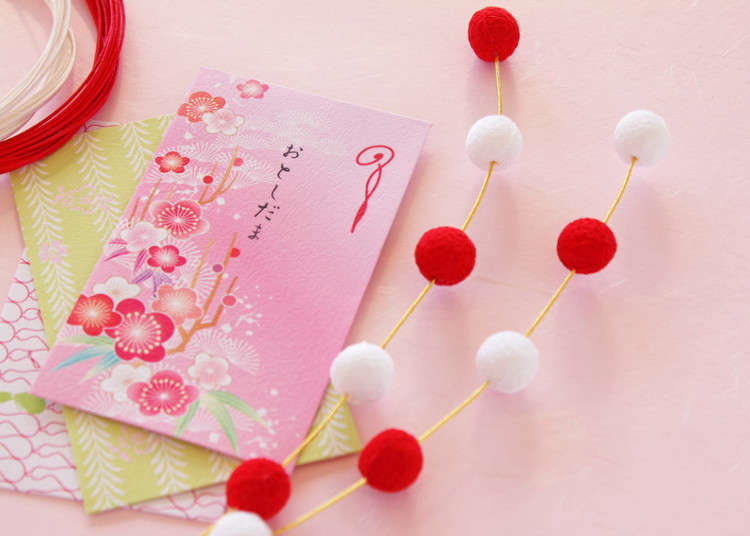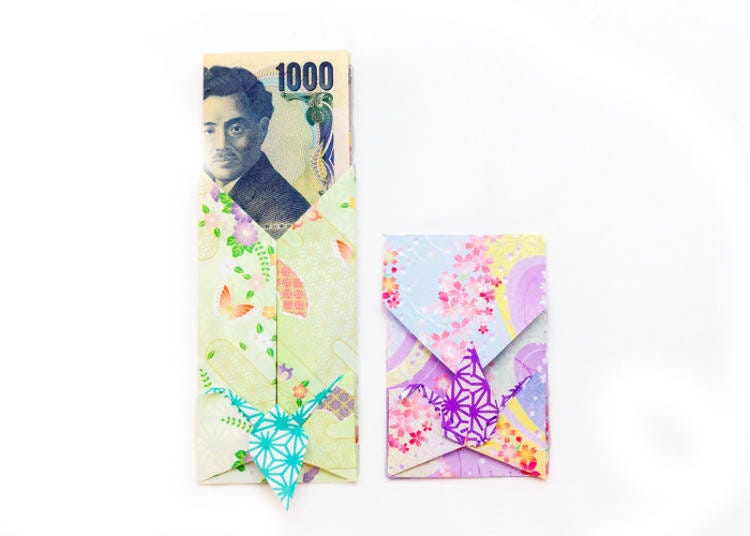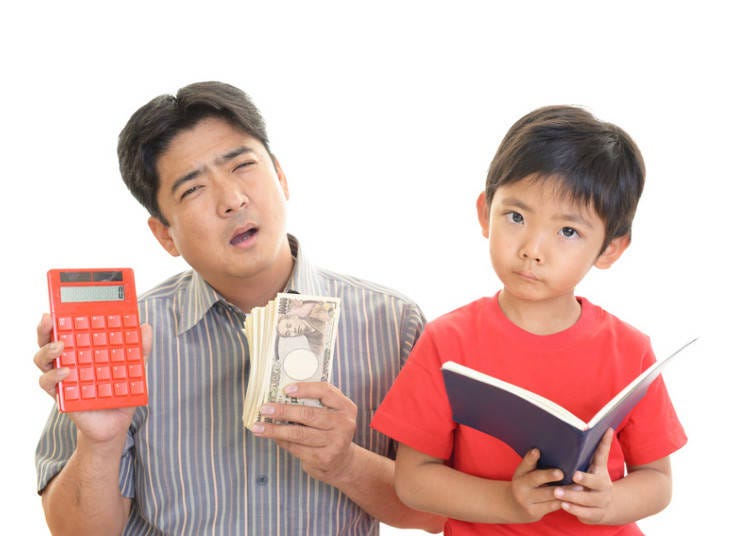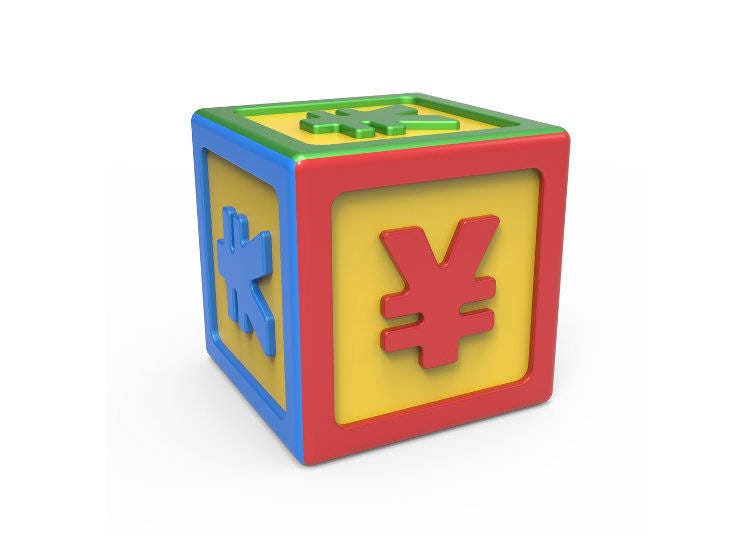
A present from Santa Claus isn't the only gift that children in Japan look forward to each winter. There's another New Year's tradition among Japanese families that's particularly exciting for the younger members: the customary gift called “otoshidama.”
Otoshidama is a monetary gift given to children by adult relatives. The money is presented in special envelopes called “pochi-bukuro,” the designs of which range from simple and elegant, to cute and whimsical. A popular motif is the zodiac animal of the year, or iconic symbols of Japan, such as maneki neko, or daruma. You can even find pochi-bukuro featuring modern-day popular characters.
The History of Otoshidama

There are reasons to believe that the roots of otoshidama lie in Japanese folklore, and that the money given to children are simultaneously an offering to the “toshigami”, the Shinto deities of the New Year. In theory, the toshigami would serve as protectors of the children receiving the money.
There used to be a Shinto ritual during which round rice cakes, known as kagami-mochi, were offered to the god of the New Year. Once over, the worshippers were given a part. When they returned to their homes, they crushed the rice cake, wrapped the parts in paper, and shared them with the family and servants, which is the origin of Otoshidama. As time passed, when visiting relatives or friends homes during New Year’s Eve, it became customary to bring gifts, originally called onenshi. It is when they started to be given to children that “otoshidama” was born.
The actual custom of giving otoshidama dates back to the Edo period (1603-1868), when wealthy families and businesses distributed bags of mochi and mikan (a Japanese mandarin orange) to families as a way to spread happiness at the beginning of each year. (This is also related to the traditional New Year's kagamimochi.)
How Much to Give?

There are no strict rules regarding the amount of money given, but there is a rough guideline that many people follow. For example, 2,000 yen for preschool children, 3,000 yen for elementary school students, 5,000 yen for junior and high school students, and so on. The amount will also vary depending on your relationship with the child: your own, close family, friends’ children, etc. For children who are too young to understand the value of money, toys or other presents are given in lieu of cash.
How to Spend Otoshidama

Once children receive otoshidama, there is always the question of how it will be spent. Often, if large sums are given, parents will make children set aside at least a portion of it for their future savings, allowing the children to buy some small, inexpensive toys with the remaining amount. Sometimes children are allowed to use it for a special, expensive item they've been wanting. It all depends on the family. No matter how the money is spent, one thing that most Japanese children can agree on is that receiving otoshidama is one of the most exciting traditions of the New Year!
- Category
*Prices and options mentioned are subject to change.
*Unless stated otherwise, all prices include tax.
Recommended places for you
-

ISHIDAYA Hanare
Yakiniku
Kobe, Sannomiya, Kitano
-

Kanzenkoshitsuyakinikutabehodai Gyugyu Paradise Sannomiya
Yakiniku
Kobe, Sannomiya, Kitano
-
Appealing

Rukku and Uohei
Izakaya
Sapporo / Chitose
-

Kambei Sannomiyahonten
Yakiniku
Kobe, Sannomiya, Kitano
-

Jukuseiniku-to Namamottsuarera Nikubaru Italian Nikutaria Sannomiya
Izakaya
Kobe, Sannomiya, Kitano
-
Goods

Yoshida Gennojo-Roho Kyoto Buddhist Altars
Gift Shops
Nijo Castle, Kyoto Imperial Palace
-

Via Inn Prime Osaka Kyobashi Mizukinoyu: A Convenient Hotel Near Osaka Castle with Open-Air Baths and Nearby Sightseeing
by: Yotsuka Hizuki
-

There’s a new museum in Japan, but almost all of its location is a secret
-

Step Into the World of Chiikawa: Immersive 'Chiikawa Park' to Open in Ikebukuro's Sunshine City This July!
-

A Don Quijote Like No Other: Step Inside the All-New Tourist-Friendly Store at Shinjuku Tonanguchi Bekkan (Open June 13)
by: Chehui Peh
-

Hotel Green Plaza Hakone (Review): Soak in the View of Mt. Fuji from an Open-Air Hot Spring
by: Mayumi Kawai
-

Tokyo travel hack: How to enjoy a free sightseeing boat tour around Tokyo Bay
-

Does It Snow in Tokyo? Tokyo Snowfall Probability Based on Amount and Number of Snow Days
-

Dining in Kyoto: Best Restaurants for Kaiseki, Sushi, Cafes & More
-

Discover the Enchantment of Winter in Otaru: Top 10 Fun Things to Do - Recommended by Locals
by: Masakazu Yoshida
-

Enjoy Hokkaido's Winter Magic: 2025 Guide to Snowy Adventures & Skiing
-

Osaka Koreatown: In Search of the Best Eats in the Korean Roots of Osaka's Tsuruhashi Market
-

Visiting Hokkaido Japan: 14 Things to Know Before Traveling to Japan's Wild North
- #best sushi japan
- #what to do in odaiba
- #what to bring to japan
- #new years in tokyo
- #best ramen japan
- #what to buy in ameyoko
- #japanese nail trends
- #things to do japan
- #onsen tattoo friendly tokyo
- #daiso
- #best coffee japan
- #best japanese soft drinks
- #best yakiniku japan
- #japanese fashion culture
- #japanese convenience store snacks














